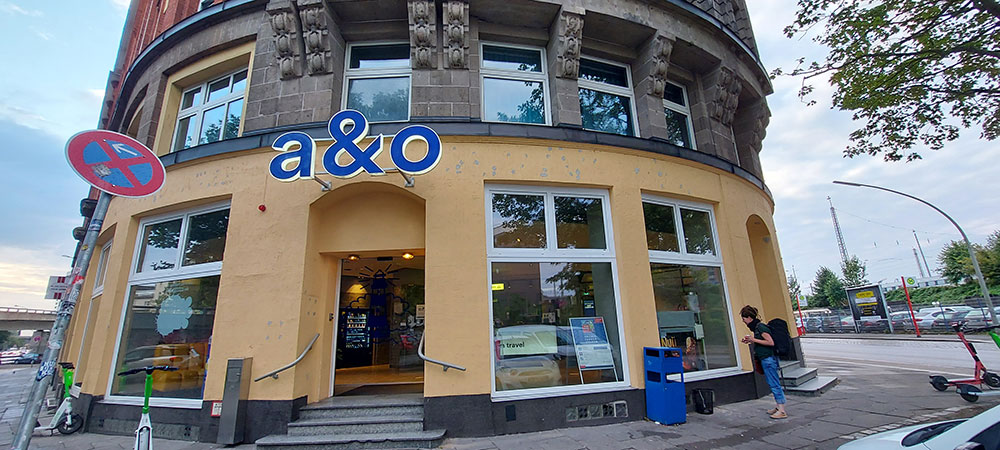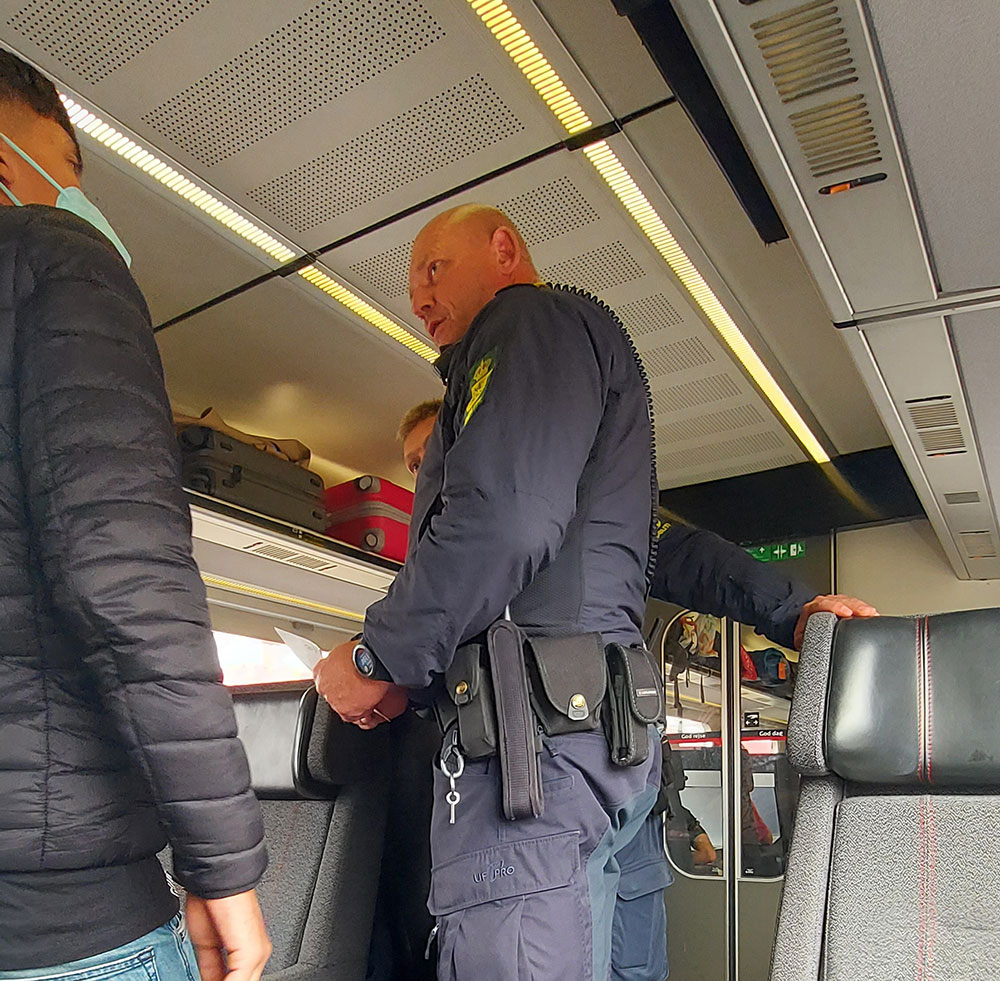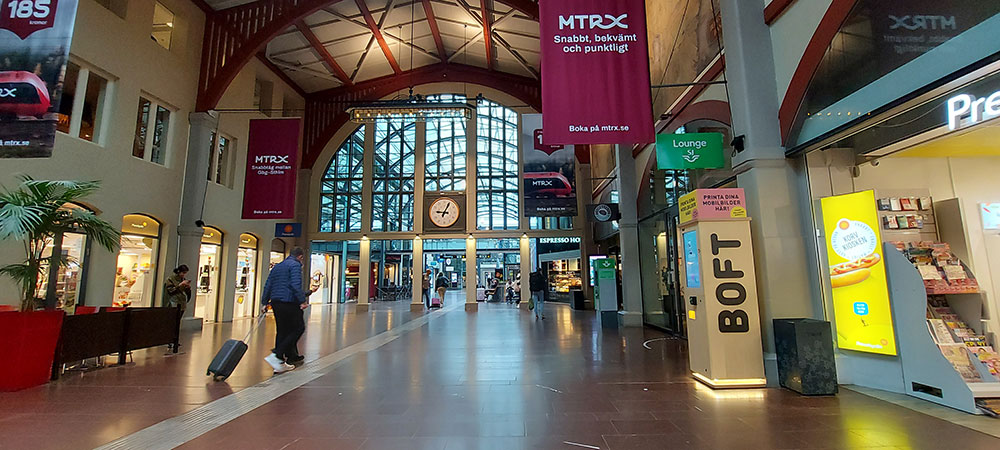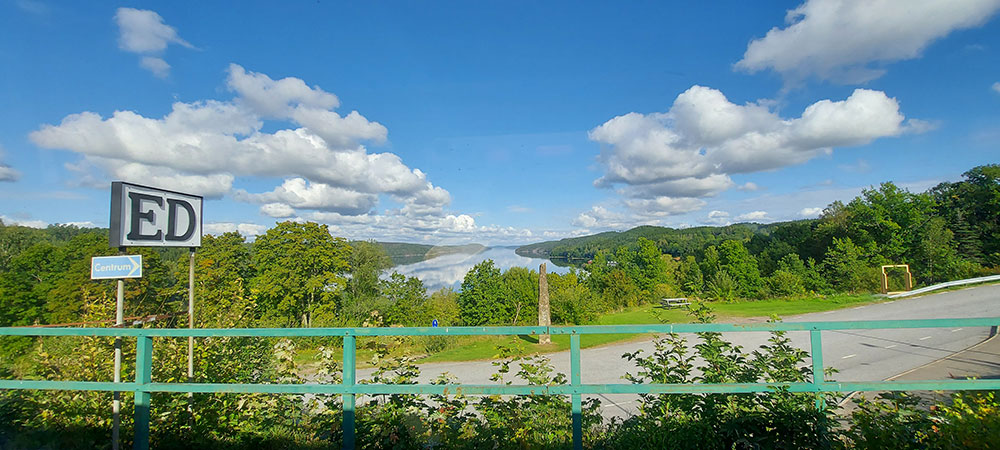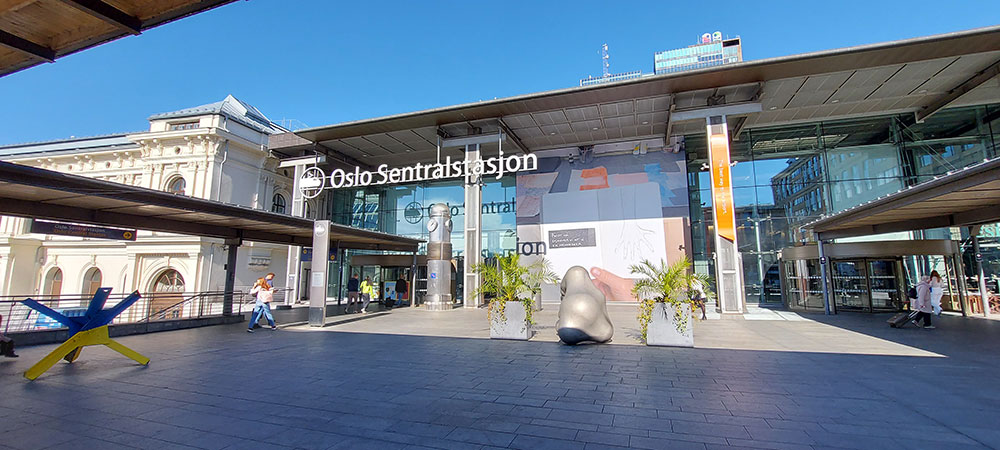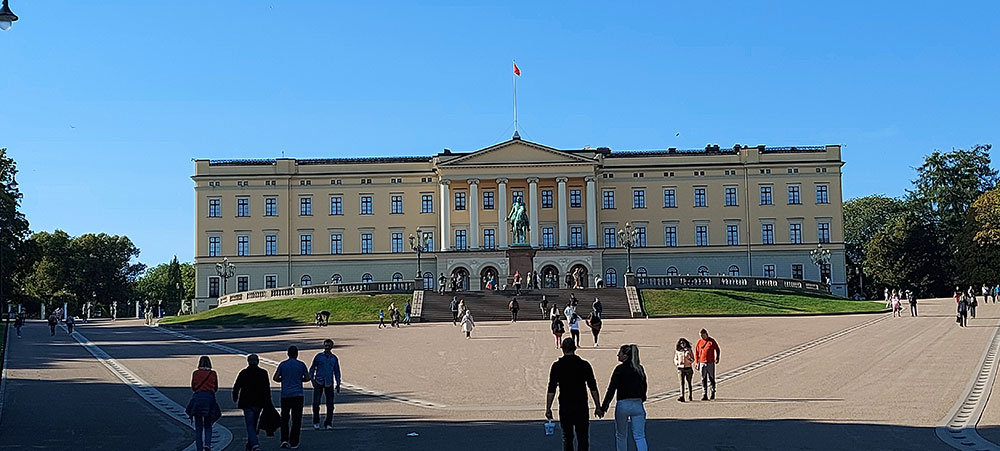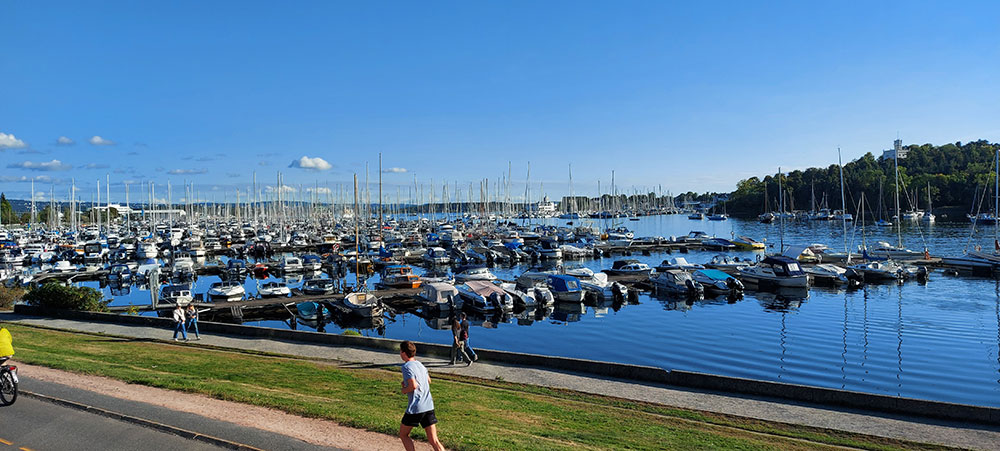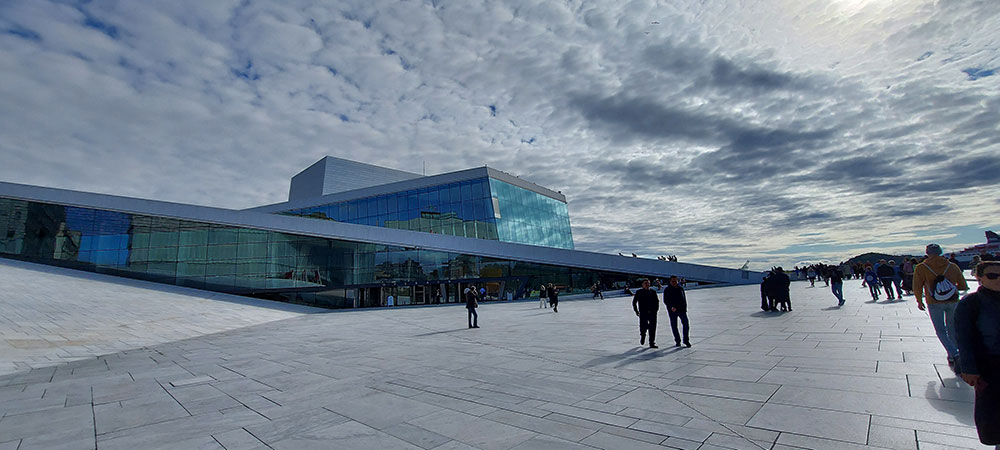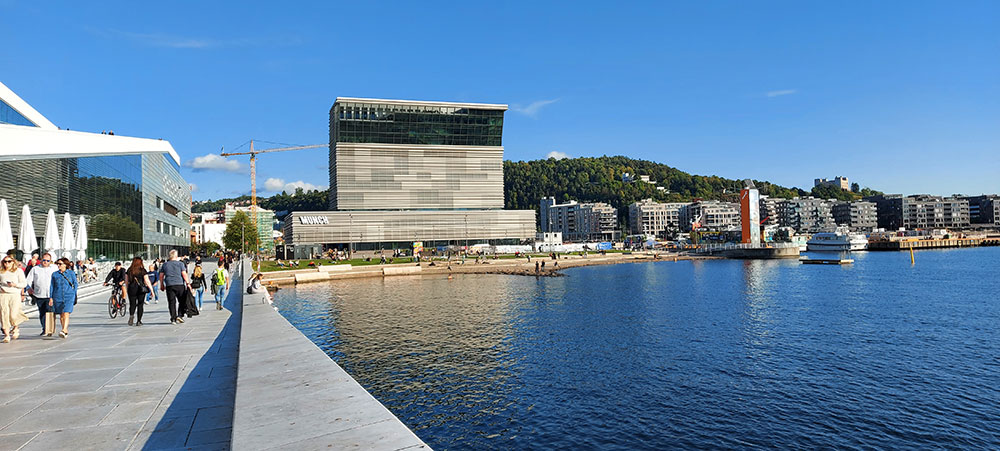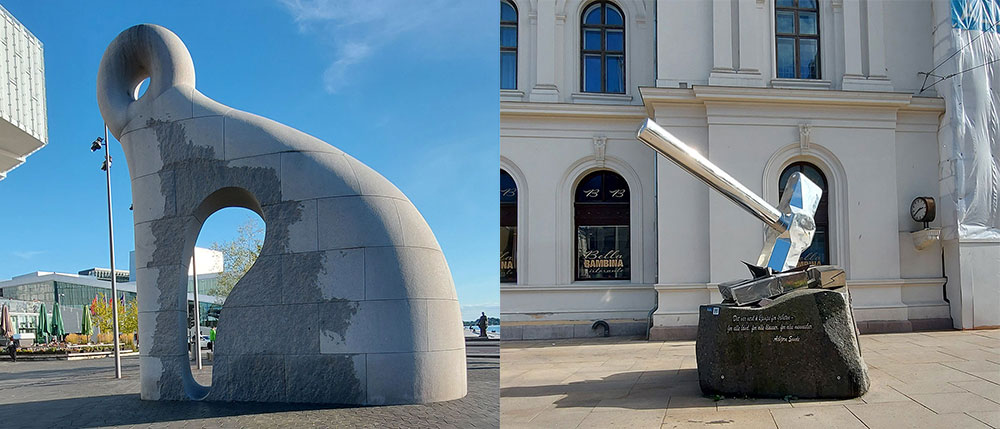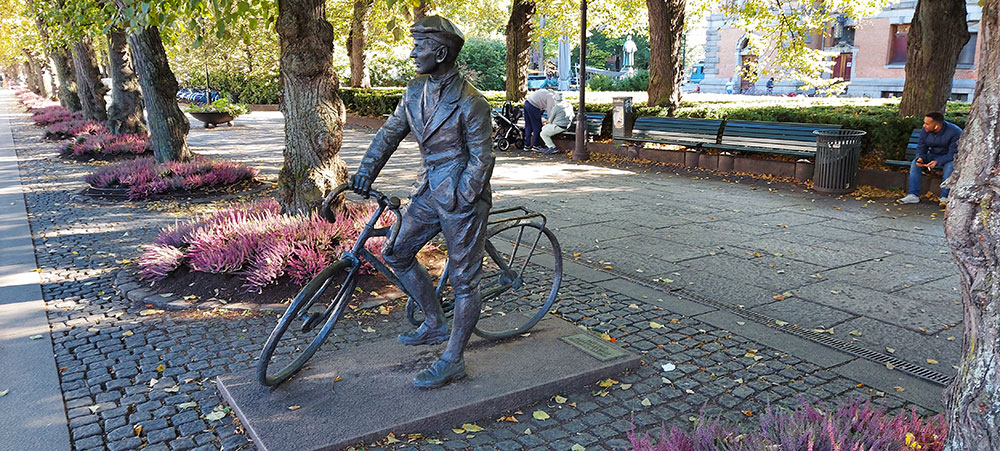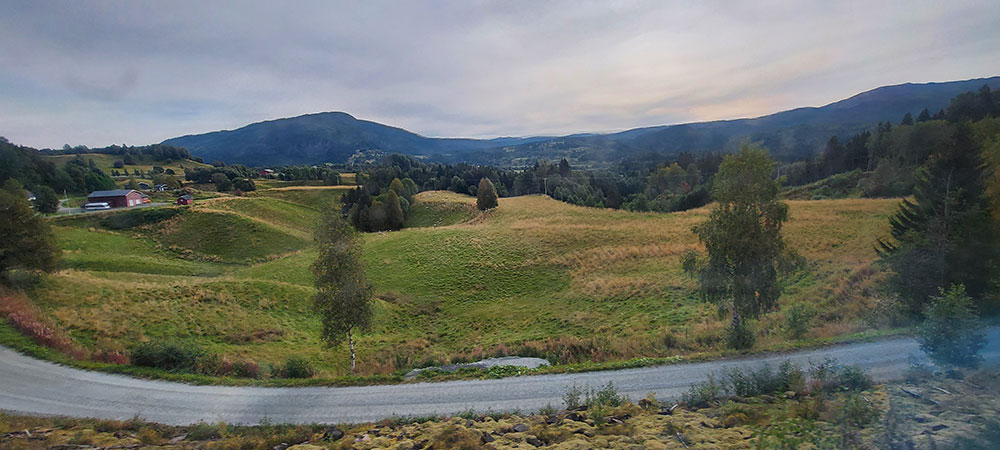I don't remember where or when I first heard of Lofoten, it may have been in a National Geographic as a pre-teen, but the name had been in my subconscious for decades. It was one of those unachievable dreams that only the fortunate few can reach. North of latitude 66°30′ N it's a land of midnight sun in summer and the solar phenomenon of the Aurora Borealis in winter, and for most of my life it was forever out of reach. Remote and rugged, it requires endurance to reach; there are no trains to Lofoten and even the ferries are hundreds of miles from the populated south of Norway. Oslo lies days away to the south and the country's longest train line runs out 100 miles short of Narvik, the mainland gateway to the archipelago of islands. To compound matters Norway isn't cheap.
It was early September as I boarded the train in Lugano, on the Swiss-Italian border, when the journey really started. With 1000 miles of train track already behind me the journey was, of course, already well underway and it had been months in the planning, but boarding the train I had a single objective in mind; to cross Switzerland, Germany, Denmark and Sweden to Norway. I was on my own time now, the commitments with Swiss Tourism of the last week behind me. Ahead lay another 2000 miles before the tracks ran out at Fauske, all planned meticulously across 5 countries. On my back a rucksack with everything I needed to survive and in my pocket a Interrail pass and accommodation bookings for Hamburg, Copenhagen and Gothenburg along the way.
 Lake Lugano on the Swiss-Italian border
Lake Lugano on the Swiss-Italian border
I often joke that the only time a train's late is because it started in Italy, so it came as no surprise that the first train on the way to Norway was late arriving at, and departing, Lugano - it was an Italian train. The impact of the delay meant a quick route route change from Lucerne for Zurich to changing at Lucerne, and Basel but no loss of time. The two hours between arriving in Basel and setting off for Hamburg were the perfect opportunity to work through my remaining Swiss Francs in the food hall before the long trek through Germany.
One of the key motivators for the trip had been reading Andrew Terrill's epic, two volume, account of his journey on foot across Europe to northern Norway and with a pre-release copy of the second volume in hand felt somewhat appropriate to be crossing Germany while simultaneously reading of how he crossed the same region carrying an enormous pack. 400 plus miles across Germany gives plenty of reading time and stuck behind a mandatory facemask I made use of it; meaning that as the train rolled into Hamburg in the darkness Andrew's journey had reached Denmark - where I was heading next morning.
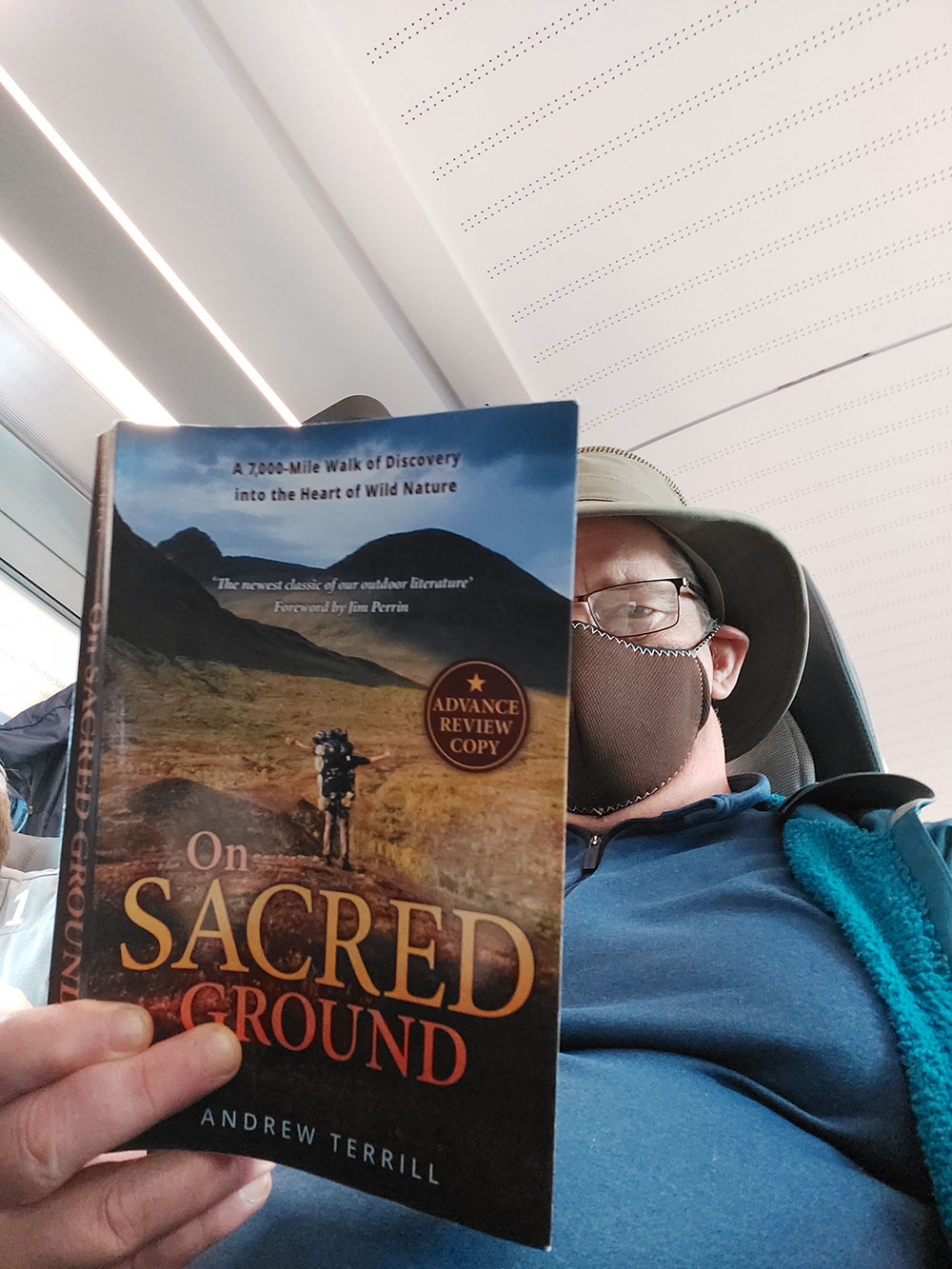 Reading On Sacred Ground crossing Germany
Reading On Sacred Ground crossing Germany
Hamburg was something of a wake-up from the previous week. From the luxury of 4 and 5 star Swiss hotels my overnight accommodation was an A&O hostel ten minutes from the main railway station. From the luxury of hotels I found myself struggling up dark stairways to a shared dorm populated by young women getting ready to head out for a night on Hamburg town as I collapsed into a single chair; unable to even consider climbing onto one of the remaining top bunks. Where 24 hours earlier my view had been the Louis Vuitton store and Lago Lugano lakefront it was now a run-down car park on one side and a busy dual carriageway on the other. By the time the ladies had departed for the city's famous nightlife I was asleep; an alarm set for some ungodly hour of the morning when I'd set off, still in darkness, for an inter-city express to Copenhagen and onwards to Gothenburg.
Between Germany and Denmark the train grinds to a halt for the border police to deal with the border crossing; something that had been seamless passing through the Schengen Zone, but at Padburg took an unexpected turn for one passenger. Unable to remember his name or nationality and without a passport or luggage he was going no further.
Neither was the train. A "technical issue" meant a change of train before the journey across Denmark, but with German, rather than Danish, efficiency the whole train was disembarked and installed into a replacement in exactly the same seat positions in less than 15 minutes. The remaining miles, or kilometres, to Copenhagen passed without incident, with passengers relieved to discard their face masks now Germany was behind us. With a quick change at Copenhagen it was onwards to Malmo and Denmark, crossing the famous 8km long Øresund Bridge.
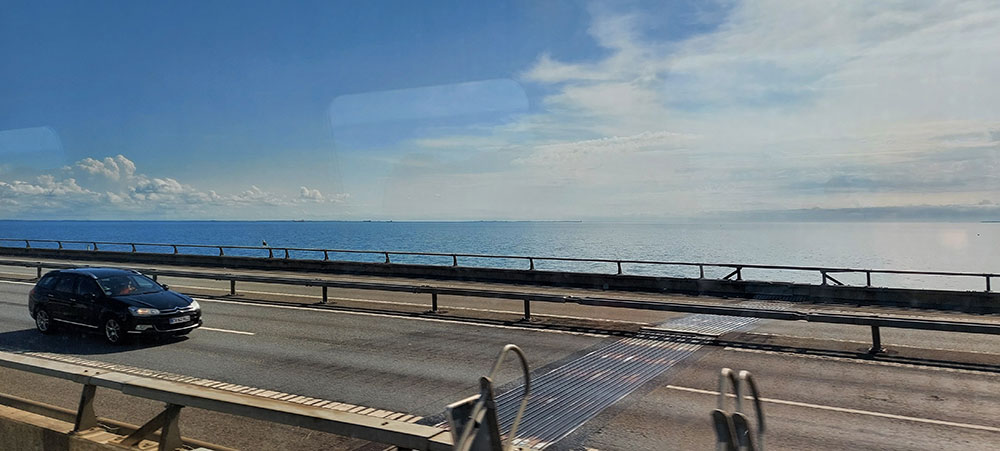 The 8km long Øresund Bridge crosses the Øresund Straight between Denmark and Sweden
The 8km long Øresund Bridge crosses the Øresund Straight between Denmark and Sweden
Malmo lies at the far end of the Øresund Bridge, a small but important city where almost every train heads in one direction - North. Thankfully that was my desired direction and for once no change was needed. From Malmo the line hugs the western shoreline of southern Sweden as it leaves the Øresund Straight behind, passing through Båstad and Helsingborg to Gothernburg, Sweden's second largest city.
While the abiding memories of Copenhagen will always be the hundreds of bikes racked up outside the railway station the memories of Gothenburg will be of a supermarket that's totally underground and multicoloured lights from the city centre clubs. Fortunately I'd pre-booked my first ever experience of a self-servive hotel just minutes from the central railway station and a communal kitchenette meant a trip round the corner to the supermarket accessed by a lift not only gave me a good feed for the night but set me up for the next day and Oslo. Gothenburg railway station is a monumental place full of retail outlets but limited on seating and far from the easiest to navigate. With another early start ahead and the most intensive section of the journey about to start the previous night's food prep was about to pay dividends.
From Gothenburg it would be two days before the luxury of a bed, with a train to Oslo followed by a few hours in the capital of Norway and a late night departure to Trondheim on the coast. Early the following morning it would be the 9 hour trek to Fauske and a bus to Narvik - gateway to the Lofoten Islands. The journey from Gothenburg to Oslo was largely a blur; a blur of fields, wind turbines and water in almost equal amounts and no noticeable difference as Sweden transitioned into Norway.
Oslo was a revelation. On a trip that had taken me through London, Paris, Bern and Copenhagen it was a capital that seemed designed for visitors. With 8 bours before my late night train to Trondheim the first priority was to ditch the heavy rucksack and Sentralstasjon has a wonderful array of lockers with room to swallow a 65litre pack twice and probably a set of skis at the same time. Being able to ditch the pack left me with the freedom to explore the compact city where the attractions are packed into a couple of kilometres. A coastal bank of white cloud soon gave way to blue skies and warm sunshine, far from what I'd expected from Norway, and the helpful tourist office at the railway station pointed me in the direction of a hop-on, hop-off bus service that took a circular route around the main attractions.
The abiding memories of Oslo will be statues, museums and an attitude that things should be visible. The Royal Palace is a far cry from the UK's royal residence, Architecturally it's impressive, and consistent with the nearby National Theatre and University and Library, but unlike Buckingham Palace in London it's approached by an expansive and unfenced road and fronted by a vast open space that allows visitors to get up close; it's actually open to the public throughout the summer despite being where the daily work of the monarchy is conducted.
Once past the royal palace the hop-on, hop-off bus winds it's way round the edge of Oslofjord to take in the Kon-Tiki musuem, showcasing the remarkable journey in 1947 when Thor Heyerdahl and his team crossed the Pacific from South America to Polynesia on a raft.
With Norway's population concentrated in the cities along the west coast sailing plays an important part of life, from the fishing industry to the steady stream of ferries and cruise ships, and nowhere is this better displayed than the moorings on the west of the city where hundreds of Oslovians keep their boats.
Having wound its way through the western edges of Oslo the bus returned, passing the ferry and cruise ship landings to the revitalised Bjorvika district where the Opera House and Munch Museum showcase modern and futuristic architecture to the delight of thousands of tourists, and just a five minute walk from the railway station.
The final, lasting, memory of Oslo was of the statues and sculptures that appear around every corner.
Having retrieved my pack from storage I boarded the night train to Trondheim, hoping to grab a few hours sleep in the seat before an early morning departure for Fauske. All I can say is "do not expect to sleep" if you've gone cheap and opted for a seat rather than a couchette or bed. Over the 8 hours I probably managed about an hour of sleep in multiple 5-10 minutes segments. With only a short gap between arriing at Trondheim and departing north on Norway's longest train route there wasn't time to see anything but the railway station, and after an almost sleepless night there was no inclination to do anything but escape the biting early morning wind.
Heading north from Trondheim the scenery revived the senses, visibly changing from zone to zone from grassland to forest before the tundra beyond the Arctic Circle. The route follows a river vallet for the majority of the route, hugging the strip of land between the coast and the mountains. The timings on the route are somewhat flexible as some sections are single track and you can grind to a halt for 20 minutes waiting for a train heading in the opposite direction to pass. Thankfully having taken the late train from Oslo I'd been able to stock up on late night, reduced price, baguettes and sandwiches in advance, although the trains do have well stocked restaurant cars - at a price.
Grassland vegetation zone
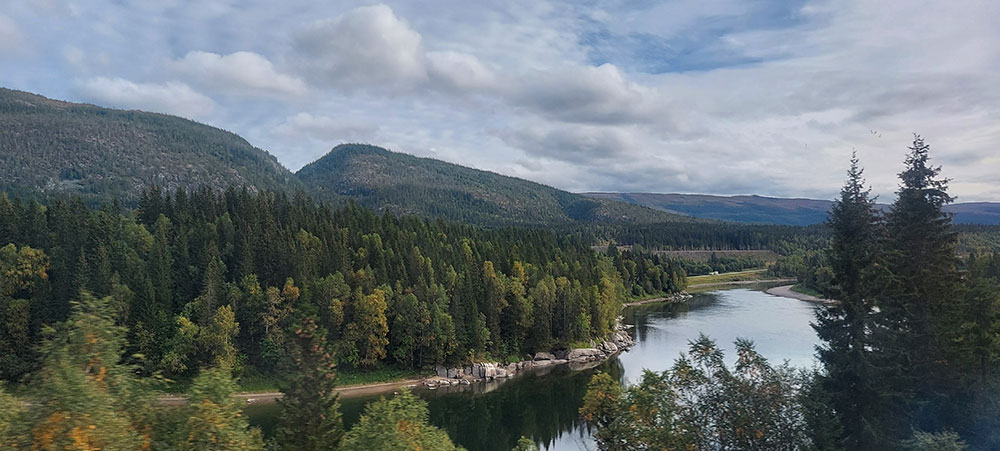 Forest zone alongside the river
Forest zone alongside the river
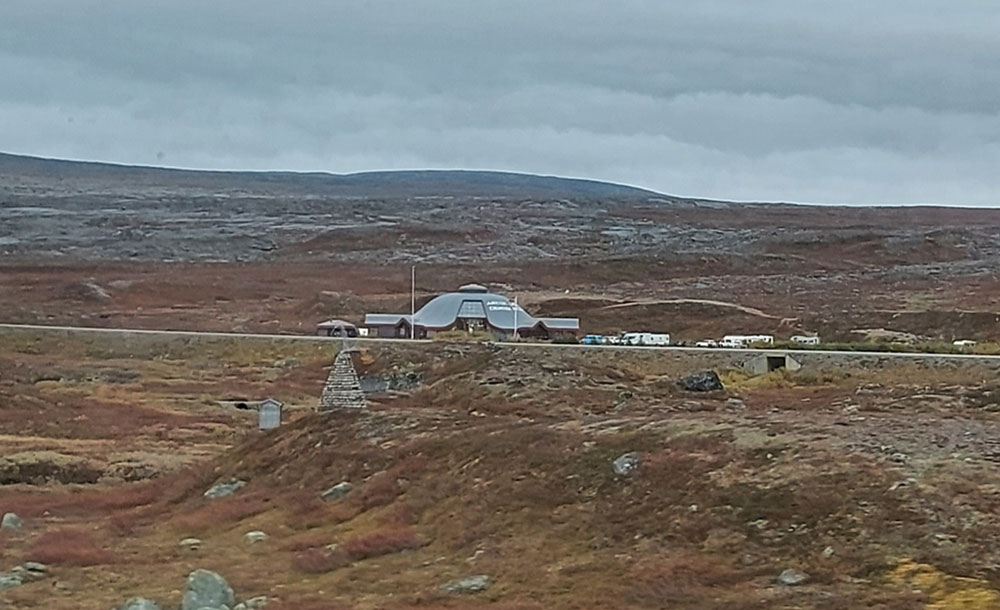 The marker denoting crossing into the Arctic Circle, well into the tundra zone.
The marker denoting crossing into the Arctic Circle, well into the tundra zone.
The end of the line, for me, was Fauske. The trains swing west here for Bodo and the coast, but the line north comes to an abrupt half at Fauske and it was buses for the next ten days from here. The bus service is very laid back with frequent stops, not just at settlements along the route but with deliberate breaks where you can get off and grab some food and drink along the way. As evening fell the bus reached Bognes wher it rolled onto a ferry. Ferries are an important part of the Norwegian road system, saving long detours inland. Landing in Skarberget was a major landmark in the journey with the final stretch of 50 miles along the E6 to Narvik - arriving in the dark at the northern gateway to Lofoten.
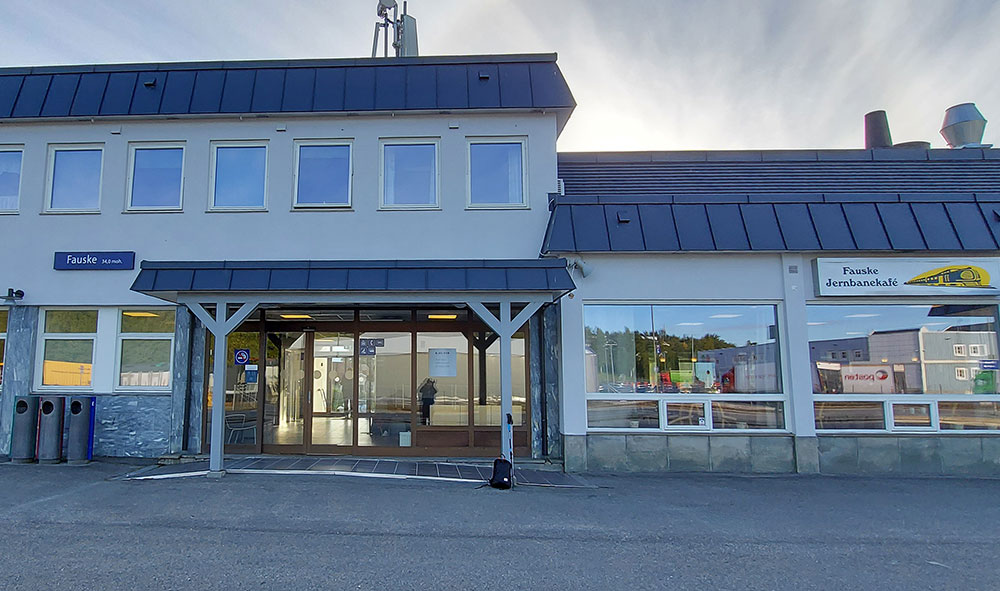 Fauske - the end of the line for trains heading north.
Fauske - the end of the line for trains heading north.
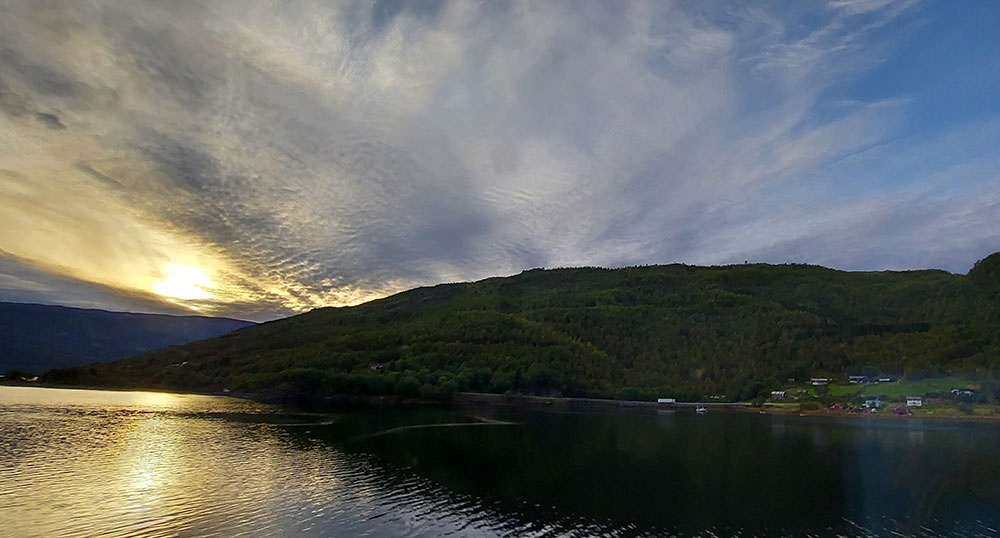 Sunset between Fauske and Narvik
Sunset between Fauske and Narvik


